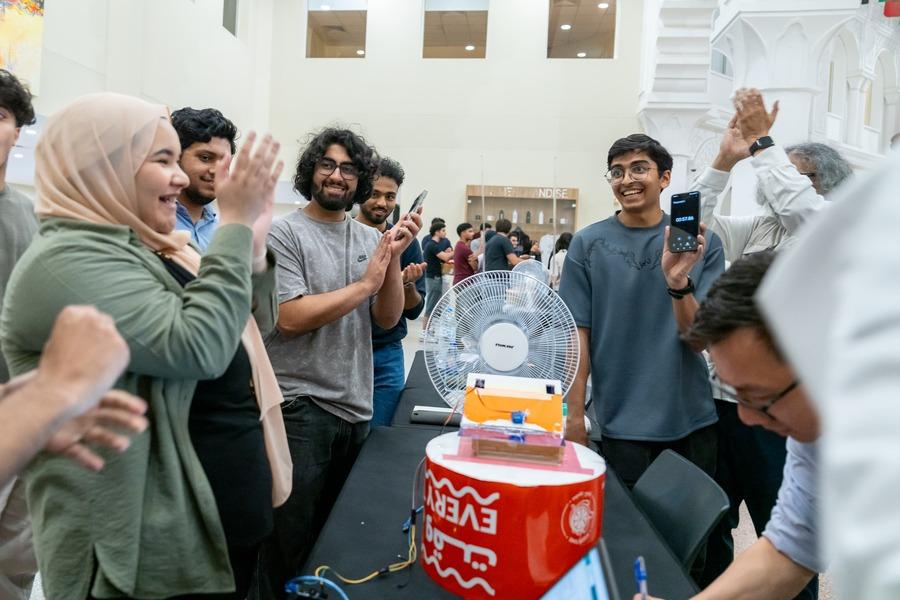- About
- Admissions
- Study at AUS
- Prospective Students
- Bachelor's Degrees
- Master's Degrees
- Doctoral Degrees
- Admission Publications
- International Students
- Contact Admissions
- Grants and Scholarships
- Sponsorship Liaison Services
- Testing Center
- New Student Guide
- File Completion
- New Student Orientation
- Payment Guide
- Executive Education
- Students with Disabilities
- Academics
- Life at AUS
- Research
- Contact Us
- Apply Now
- .

AUS engineering students design flying prototypes in semester competition
What began as a class assignment soon evolved into an intensive, hands-on learning experience for nearly 150 first-year engineering students at American University of Sharjah (AUS). As part of their Introduction to Computing and Engineering course (NGN 110), students were divided into 34 teams to take on the semester’s big challenge: design a prototype of a flying device capable of reaching and maintaining a specific altitude using Arduino technology and creative engineering.
After rounds of testing, trials and refinements, one team stood out for both performance and collaboration. Taking first place were Mohamed Ansari (chemical and biological engineering), Salma Awadalla (industrial engineering), Rana Keshk (digital construction engineering and management) and Omar Alfairouz (chemical engineering), with their prototype maintaining the required elevation for 57.89 seconds—the longest among all participating teams
“We faced multiple technical challenges along the way, and each attempt helped us understand how to improve,” said Ansari. “What made the real difference was our coordination as a team—we shared ideas, divided tasks efficiently and supported one another throughout the process.”
Held each semester, the NGN 110 competition is a core component of the College of Engineering’s curriculum. The course emphasizes key concepts such as teamwork, design thinking, ethics, sustainability and real-world application of technical knowledge. This semester’s challenge gave students freedom to experiment, resulting in prototypes that ranged from 3D-printed wing structures to Arduino-powered mechanisms replicating actual aircraft responses. Arduino is an open-source electronics platform based on easy-to-use hardware and software, commonly used to build digital devices and interactive systems.
Dr. Bayan Hamdan, Assistant Professor of Industrial Engineering and event organizer, highlighted the competition’s broader educational value.
“This competition is designed to mirror the engineering process—identifying a problem, working within constraints, testing ideas and refining them collaboratively. What stood out this year was the level of innovation, resilience and teamwork on display. The students took ownership of their learning and demonstrated a strong commitment to supporting one another throughout the journey,” she said.
Dr. Fadi Aloul, Dean of the AUS College of Engineering, emphasized the competition’s alignment with the college’s strategic approach to education.
“This competition reflects our strategic commitment to experiential learning and innovation. Introducing real-world challenges early in a student’s academic journey helps build the critical thinking, soft skills, including multidisciplinary teamwork, communication and leadership skills essential for future engineers to thrive in a fast-changing world,” said Dr. Aloul.
The AUS College of Engineering is dedicated to preparing the next generation of engineers to think critically, design responsibly and lead confidently. By integrating rigorous academics with hands-on learning, the college cultivates the technical expertise, collaborative mindset and adaptability needed to solve today’s complex challenges and shape the innovations of tomorrow. To learn more about the college, visit www.aus.edu/cen.

